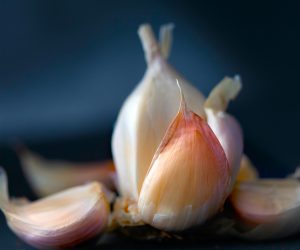
Bacteria and Your Broken Heart
Al Sears, MD, CNS – German researchers analyzed the gut bacteria in healthy people and patients with heart failure. They found that the heart failure patients were missing important groups of bacteria that fight inflammation. Their gut flora was not as diverse as in healthy people.
In your screening for heart disease, I bet your doctor will never think to check your gut.
And that may well be where your heart problems start. Let me explain…
Your gut plays a critical role in your overall health. It’s a major part of your body’s ecosystem. It’s home to trillions of bacteria, viruses and fungi. They make up your “microbiome.”
Doctors are beginning to pay attention when it comes to these bacteria. But they’re still missing the big picture.
This microcosm affects just about every organ and body system. Some of these gut bugs cause disease and infection. Others boost your immune system. Still others help you digest your food and turn it into vitamins.
The secret to vibrant health is having enough good microbes to crowd out the bad ones.
When the “bad bacteria” in your gut crowd out the “good bacteria” you see an increase in disease and aging.
Studies show that an imbalance in your gut bugs can cause chronic inflammation throughout your body. It’s been linked to immunity, obesity, diabetes and chronic kidney disease.
Now, new research shows that gut bacteria may be used to predict your risk of heart failure and other cardiac events like heart attacks and stroke.
German researchers analyzed the gut bacteria in healthy people and patients with heart failure. They found that the heart failure patients were missing important groups of bacteria that fight inflammation. Their gut flora was not as diverse as in healthy people.
In addition, heart failure patients had higher levels of trimethylamine N-oxide (TMAO), a product of some gut bacteria.
In fact, TMAO may be an early disease marker for heart failure. In one study from the Cleveland Clinic, researchers measured TMAO in 4,000 people having elective coronary angiograms. TMAO levels predicted major cardiac events over the following three years.
Another study from Cleveland Clinic found that heart failure patients with the highest levels of TMAO had a 3.4-fold increase in their risk of death.
Antibiotics, stress, excess alcohol, chlorine and other toxins can destroy your good gut bugs and allow bad ones to thrive. I help my patients rebalance their microbiome with good bacteria called probiotics.
You can take probiotic supplements.
Look for one that guarantees 10-20 billion CFUs (colony forming units) at the expiration date.
This is key. Probiotics are very sensitive to heat, humidity, pH levels and oxygen. Between the time of packaging and the time you take them, billions of the bacteria may die off.
But a much better way to get enough probiotics is from the foods you eat. Just a few tablespoons of lacto-fermented foods a day can boost your good bacteria.
I recommend making your own probiotic sauerkraut. You see, when you ferment cabbage with salt, good Lactobacillus bacteria multiply. But most commercial sauerkraut is pasteurized. That destroys ALL bacteria — good and bad.
Here’s my favorite quick and easy sauerkraut recipe.
Traditional Sauerkraut
1 head of cabbage
1/8 cup of Himalayan pink sea salt or Celtic sea salt
2 cloves garlic, peeled and smashed
1 tablespoon red pepper flakes
Remove outer leaves from the cabbage head and set aside. Slice the cabbage into thin ribbons.
Place cabbage in a large bowl. Sprinkle with salt. Knead the cabbage with your hands for about ten minutes. Cabbage should start producing liquid brine. Stop kneading when you have enough liquid brine to cover the cabbage.
Add garlic and pepper flakes to cabbage. Mix together and transfer to a 1-quart Mason jar. Stuff the cabbage tightly into the jar. You should have enough brine to cover the cabbage. If not, add water to cover the cabbage completely.
Add the reserved cabbage leaves on top to weigh down the cabbage and make sure it is submerged in the brine. If not completely submerged, the cabbage could grow mold.
Seal the Mason jar. Let it sit on your kitchen counter or other cool place (60 to 70 degrees F). After two weeks check for your desired tanginess and crunch. Stop the fermentation by moving the jar to the refrigerator. Enjoy right away or store in the refrigerator for up to six months.
To Your Good Health,
Al Sears, MD
To read the original article click here.
For more articles by Al Sears, MD click here.






